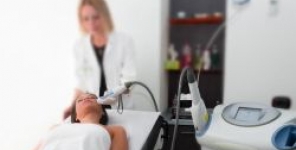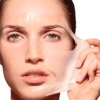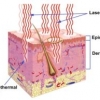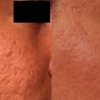Uno studio randomizzato e controllato di quattro laser frazionati ablativi per il foto-invecchiamento: uno studio di quadrante
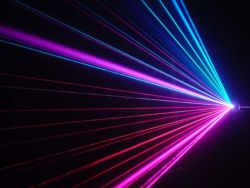 La tecnologia frazionata ha rivoluzionato la terapia laser. Con il successo dei dispositivi iniziali, diversi laser frazionati sono apparsi sul mercato. Le pretese di superiorità hanno reso la scelta del dispositivo difficile per medici e pazienti.
La tecnologia frazionata ha rivoluzionato la terapia laser. Con il successo dei dispositivi iniziali, diversi laser frazionati sono apparsi sul mercato. Le pretese di superiorità hanno reso la scelta del dispositivo difficile per medici e pazienti.
Materiali e Metodi
Dodici soggetti sono stati trattati con laser ablativi frazionati (10,600-nm al biossido di carbonio e 2790 nm ittrio scandio gallio granato), in questo studio approvato dal comitato etico. Ciascuna faccia è stata divisa in quattro quadranti, e ogni quadrante è stato trattato in modo casuale con uno dei quattro laser. L'esperienza clinica è stata utilizzata per ottimizzare le impostazioni. Due pazienti sono stati sottoposti a biopsie da ciascun quadrante immediatamente dopo il trattamento. I pazienti e gli investigatori in cieco hanno valutato il dolore durante il trattamento e il post-trattamento di miglioramento del foto-invecchiamento (misurato dalle rughe, lentiggini, struttura e dimensioni dei pori) usando una scala a cinque punti.
Risultati
Tutti i dispositivi hanno portato ad un miglioramento statistico del foto-invecchiamento in tutti i pazienti, ma nessun dispositivo è stato significativamente superiore dal punto di vista statistico. Nessuna differenza statisticamente significativa è stata trovata nei punteggi del dolore. Tutti i pazienti hanno riferito soddisfazione 1 mese dopo il trattamento. Tre pazienti hanno manifestato reazioni avverse. Istologicamente, non vi sono state differenze statisticamente significative tra i dispositivi.
Conclusioni
I laser frazionati ablativi risultano affidabili nel miglioramento del foto-invecchiamento. Nonostante le pretese del marketing, non è stata trovata alcuna differenza statisticamente significativa nei risultati, nel dolore durante il trattamento, o nei reperti istologici. Anche con gli utenti più esperti, sono possibili significative reazioni avverse.
Storia della pubblicazione:
Titolo: A Randomized, Controlled Trial of Four Ablative Fractionated Lasers for Photoaging: A Quadrant Study
Rivista: Dermatologic Surgery. doi: 10.1111/j.1524-4725.2012.02500.x
Autori: Brenda C. LaTowsky, Naheed Abbasi, Jeffrey S. Dover, Kenneth A. Arndt, Michael S. Kaminer, Thomas E. Rohrer, Jennifer L. MacGregor, Naissan O. Wesley, Melissa A. Durfee, Steven R. Tahan
Affiliazioni: SkinCare Physicians, Chestnut Hill, Massachusetts
Department Dermatology, School of Medicine, Yale University, New Haven, Connecticut
Department of Surgery Geisel School of Medicine, Dartmouth College, Hanover, New Hampshire
Department of Dermatology, School of Medicine, Harvard University, Cambridge, MA
Department of Dermatology, School of Medicine, Boston University, Boston, Massachusetts
Department of Pathology, Beth Israel Deaconess and School of Medicine, Harvard University, Boston, Massachusetts, USA
Abstract:
Background
Fractionated technology has revolutionized laser therapy. With the success of initial devices, several fractionated lasers have appeared on the market. Claims of superiority have made device choice difficult for physicians and patients.
Materials and Methods
Twelve subjects were treated with fractionated ablative lasers (10,600-nm carbon dioxide and 2790-nm yttrium scandium gallium garnet) in this institutional review board–approved trial. Each face was divided into four quadrants, and each quadrant was randomly treated using one of four lasers. Clinical experience was used to optimize settings. Two patients submitted biopsies from each quadrant immediately after treatment. Patients and blinded investigators assessed pain during treatment and post-treatment improvement in photoaging (measured by rhytides, lentigines, texture, and pore size) using a five-point scale.
Results
All devices resulted in statistical improvement in photoaging in all patients, but no device was statistically significantly superior. No statistically significant difference was found in pain scores. All patients reported satisfaction 1 month after treatment. Three patients experienced adverse reactions. Histologically, there were no statistically significant differences between devices.
Conclusions
Fractionated ablative lasers reliably result in improvement in photoaging. Despite marketing claims, no statistically significant differences were found in outcomes, pain during treatment, or histologic findings. Even with experienced users, significant adverse reactions are possible.
https://www.youtube.com/@djfdm
